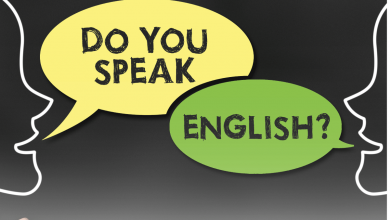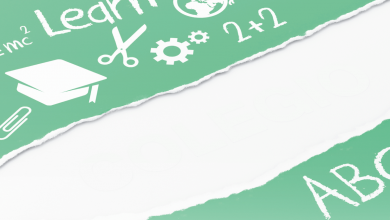Pruebas a tus estudiantes para averiguar si son visuales, auditivos o kinestésicos? Entonces, ¿adaptas tus clases para ajustarlas a todos los estilos? Todos los buenos maestros hacen estas cosas ¿verdad? Bueno, no, no necesariamente – ¿Te has preguntado alguna vez dónde se originó esta práctica y si existe alguna base de investigación que la apoye? o ¿lo haces porque crees que eso “está bien”?
Desde la lectura de artículos de neurólogos como Howard–Jones, Dekker, Pickering y sus colegas (2007, 2009, 2012, 2014), he estado interesada en los estilos de aprendizaje en la enseñanza. El problema de la enseñanza basada en el cerebro y los estilos de aprendizaje no es solo relevante para la enseñanza–aprendizaje de idiomas, sino para la educación en general. Se ha invertido mucho tiempo y esfuerzo en los estilos de aprendizaje y en este artículo me gustaría cuestionar una idea que hemos mantenido como intuitivamente correcta cuando la evidencia muestra lo contrario.
Estilos de aprendizaje y el cerebro
¿De qué estoy hablando cuando digo “estilos de aprendizaje”? y ¿qué tiene esto que ver con el cerebro? Voy a manejar esto desde la noción de que los estudiantes son principalmente visuales, auditivos o kinestésicos (VAK), es decir, que algunos estudiantes aprenden mejor cuando leen, otros cuando escuchan información y otros cuando hacen algo. Esta idea se popularizó en la década de 1970 y 80 y todavía se promueve ampliamente en las aulas de todo el mundo hoy en día. Como veremos más adelante, los orígenes de los estilos de aprendizaje VAK reposan en lo que sabemos del cerebro y de cómo funciona.
¿Qué significa para la enseñanza la creencia que los estilos de aprendizaje afectan el aprendizaje? Pues bien, en las aulas de todo el mundo, los estudiantes son evaluados utilizando dos cuestionarios: uno de autoevaluación y otro más formal diseñado para determinar cuál de los estilos de aprendizaje VAK es el que representa la forma en la que mejor aprenden. En segundo lugar, los aprendices se dividen en grupos de acuerdo a su estilo de aprendizaje y la enseñanza se dirige a su estilo particular bajo la creencia de que esto va a mejorar el aprendizaje – a esto se llama «hipótesis de engrane” (Pashler y otros, 2009). Además, a los estudiantes se les pide en ocasiones ‹estilo de estiramiento›, es decir, que se les ofrecen oportunidades «para ganar experiencia operando fuera de su estilo preferido» (Púrpura: 2014: 536). Como formador de docentes, la consecuencia obvia de la aplicación de estilo de aprendizaje es que en los cursos de formación docente se enseña que los estilos de aprendizaje son importantes y que los entrenadores ayudan a los docentes a incorporar la idea de identificar y acomodar los estilos de aprendizaje en su quehacer, de hecho, este se encuentra en el plan de estudios de muchos programas internacionales de formación docente.
Esta práctica ha sido parte importante de la formación docente y la enseñanza durante más de 40 años, así que imagina mi sorpresa al enterarme de que los neurólogos consideran la idea de ser un Neuromito. Hay una gran cantidad de investigaciones y opiniones que apoyan la idea de que la enseñanza de estilos de aprendizaje preferidos no tiene efectos significativos en el aprendizaje. Esto quiere decir que hemos estado perdiendo una gran cantidad de tiempo y recursos en algo que no tiene ninguna base de investigación, y lo más importante es que podríamos estar gastando ese tiempo y esfuerzo en la enseñanza de ideas que sí tengan una base de investigación y que se pueda poner a prueba en el trabajo.
El caso en contra de los estilos de aprendizaje
¿Cuál es la evidencia en contra de la enseñanza de los estilos de aprendizaje como una forma de apoyar a un mejor aprendizaje? Bueno, hay básicamente tres argumentos:
1. Evidencia neurocientífica
En términos de evidencia neurocientífica, se ha observado que procesamos diferentes tipos de información en distintas partes del cerebro. Este ha sido el fundamento neurológico en el que se cree que si se trabaja con los estilos de aprendizaje, mejora el aprendizaje. La idea es que cada aprendiz es mejor en un tipo de procesamiento (visual, auditivo o kinestésico) y por lo tanto si se trabaja con su modo preferido, se mejorará el aprendizaje. Sin embargo, como señala Howard–Jones “La interconectividad del cerebro invalida tal suposición errónea” (2014: 818). Saber cómo funciona el cerebro y la hipótesis de engrane no tiene sentido: no aprendemos usando solo un modo sensorial.
2. Evidencia empírica en contra de la hipótesis de engrane
Hay dos tipos de pruebas a considerar aquí: la falta de pruebas bien construidas para apoyar la hipótesis de engrane (la idea de que la adecuación de la enseñanza al estilo de aprendizaje del estudiante mejorará el aprendizaje); y la evidencia en contra de la hipótesis de engrane. Pashler et al. (2009) discuten la falta de pruebas convincentes a favor de la hipótesis de engrane y pasan a esbozar el diseño del experimento y los resultados que se esperarían para proporcionar pruebas de la hipótesis. Rogowsky et al. (2015) asumió el reto de construir solo un experimento para probar la hipótesis de engrane. Llegan a la conclusión de que “no hemos podido encontrar ningún apoyo estadísticamente significativo para la adaptación de los métodos de enseñanza al estilo de aprendizaje de un individuo”. (2015: 77)
3. ¿Qué es un estilo de aprendizaje?
En 2004 Coffield et al. publicaron su informe después de una extensa investigación de dieciséis meses sobre diferentes estilos de aprendizaje y las implicaciones de estos en el aula. Llegaron a la conclusión de que “los investigadores sobre estilos de aprendizaje no hablan con una sola voz” (2004: 140). Encontraron 13 modelos diferentes de estilos de aprendizaje (VAK siendo solo uno de ellos) y en total se identificaron más de 80 estilos diferentes de aprendizaje. Está claro que hay un problema con la definición de lo que precisamente es un estilo de aprendizaje, y esto también ha creado enormes problemas al intentar investigar los posibles beneficios para el aula.
Por tanto, parece que podemos decir que los estilos de aprendizaje son lo mejor cuando son de la preferencia del estudiante puesto que puede motivar a los estudiantes en el aula y son lo peor, porque se puede estar perjudicando a los estudiantes al animarlos a aprender de maneras poco eficaces para el contenido con el que están trabajando. También se les puede estar dando una razón falsa de su aprendizaje o la falta de aprendizaje basado en la forma en que el material se les está presentando. Por ejemplo, “No soy bueno en la comprensión de lectura porque soy un aprendiz auditivo”, se convierte en una profecía en sí misma, pero no está respaldada por la investigación. Ten en cuenta también que como Rogowsky et al. señalan, la mayoría de los sistemas de educación dependen en gran medida de la lectura y la escritura, “Por lo tanto, es importante dar a los estudiantes la mayor experiencia con material escrito como sea posible para ayudar a construir estas habilidades, independientemente de su estilo aprendizaje preferido” (2015: 77).
Los neurocientíficos consideran la hipótesis de engrane como un neuromito, pero es uno de los muchos profesores de diferentes áreas el que cree esto. Howard–Jones et al. (2009) y Dekker et al. (2012) muestran que casi un 95% de los profesores de primaria y secundaria de todo el mundo creen este mito y Lethaby y Harries (2016) muestran que casi el 90% de los profesores de inglés que hicieron parte en el estudio creen que es cierto que enseñarle a un estudiante con el estilo de aprendizaje de su preferencia, mejorará su aprendizaje.
 El camino a seguir
El camino a seguir
Creo que debemos emplear la variedad en el aula y empezar a trabajar con el material que se tiene de diferentes formas, pero no porque crea que se debe acomodar la enseñanza a las preferencias del estudiante para mejorar su aprendizaje (la evidencia muestra que es difícil identificar en realidad el modo sensorial preferido de los estudiantes (Krätzig y Arbuthnott, 2006), y que bajo el escrutinio, la hipótesis de engrane no se sostiene (Rogowsky et al., 2015)), sino porque creo que deberíamos presentar el material a los estudiantes de manera adecuada sobre lo que se debe aprender. Como dice Willingham (2005) “el contenido debe coincidir con la presentación”. Creo que hay que mirar más formas basadas en evidencia para ayudar a los estudiantes a aprender de manera más efectiva, como por ejemplo saber cómo combinar exitosamente texto con imágenes o texto y audio o texto y animación.
Por último, se trata de dejar de promover la hipótesis de engrane en la educación. Mayne señala que “existe una industria muy lucrativa construida alrededor de pruebas y el suministro de materiales para los diferentes tipos de estudiantes”. (2012: 67) Pasamos un tiempo valioso y recursos (tanto dentro como fuera del aula) identificando estilos de aprendizaje y adaptando nuestro método de enseñanza a ellos. Vamos a hablar de esto abiertamente con los maestros y profesores en formación, vamos a ver la evidencia y a esperar si deciden por sí mismos lo que necesitan para tomar una nueva dirección en la enseñanza, a partir de estrategias e ideas que realmente funcionen.
Learning styles: Have we been wasting time and resources?
Do you test your learners to find out whether they are visual, auditory or kinesthetic? Then, do you adapt your teaching to accommodate all the styles? All good teachers do these things, right? Well, no, not necessarily – have you ever considered where this practice originated and whether there is any research base to support it? Or do you do because it just seems to ‘feel right’?
 Since reading articles by neuroscientists like Howard–Jones, Dekker, Pickering and their colleagues (2007, 2009, 2012, 2014), I have been interested in the idea of learning styles in teaching. The issue of brain–based teaching and learning styles is not just relevant to language teaching and learning, but to education in general. Much time and effort has been expended on learning styles and in this article, I’d like to question an idea that we have held to be intuitively correct when the evidence suggests otherwise.
Since reading articles by neuroscientists like Howard–Jones, Dekker, Pickering and their colleagues (2007, 2009, 2012, 2014), I have been interested in the idea of learning styles in teaching. The issue of brain–based teaching and learning styles is not just relevant to language teaching and learning, but to education in general. Much time and effort has been expended on learning styles and in this article, I’d like to question an idea that we have held to be intuitively correct when the evidence suggests otherwise.
Learning styles and the brain
So, what am I talking about when I say ‘learning styles’ and what does this have to do with the brain? I will be dealing here with the notion that learners are primarily visual, auditory or kinesthetic (VAK), that is, that some learners learn better when they read something, others when they hear information and others by actually doing something. This idea became popularized in the 1970s and 80s and is still promoted widely in classrooms all around the world today. As we’ll see below, the origins of the VAK learning styles idea lie in what we know about the brain and how it works.
What does this belief in the idea that learning styles affect learning mean for teaching? Well, in classrooms all over the globe, learners are assessed using both self–report questionnaires and more formal questionnaires designed to determine which of the VAK learning styles is the one that represents the way that the learner best learns. Secondly, learners are divided into groups according to their learning style, and teaching is directed to their particular style in the belief that this will enhance learning – this is the so–called ‘meshing hypothesis’ (Pashler et al 2009). Additionally, learners are sometimes required to ‘style stretch’, that is, they are offered chances “to gain experience operating outside their preferred style” (Purpura: 2014: 536). As a teacher educator, the obvious consequence of learning style application is that on teacher education courses we teach that learning styles are important and teacher trainers help teachers to incorporate the idea of identifying and accommodating learning styles into their teaching, indeed it is on the syllabus of many international teacher education programs.
This practice has been an important part of teacher education and teaching for over 40 years now, so imagine my surprise upon learning that neuroscientists consider the idea to be a neuromyth. There is a wealth of research and opinion supporting the idea that teaching to learners’ preferred learning styles has no significant effect on learning. This suggests that we have been wasting a lot of time and resources on something that has no research base, and more importantly that we could be spending that time and effort on teaching ideas that do have a research base and that under examination do work.

The case against learning styles
So, what is the evidence against teaching to learning styles as a way to support better learning? Well there are basically three different arguments.
1. Neuroscientific evidence
In terms of neuroscientific evidence, it has been observed that we process different types of information in different parts of the brain. This has been the neurological underpinning for the idea that catering to learning styles enhances learning. The thinking is that each learner is better at one kind of processing (visual, auditory or kinesthetic) and therefore if her/his preferred mode is accommodated learning will be improved. However, as Howard–Jones points out “the brain’s interconnectivity makes such an assumption unsound,” (2014: 818). Knowing how the brain works, the meshing hypothesis does not make sense: we do not learn using just one sensory mode.
2. Empirical evidence against the meshing hypothesis
There are two types of evidence to consider here: the lack of well–constructed evidence to support the meshing hypothesis (the idea that matching teaching to student’s learning style will enhance learning); and the evidence against the meshing hypothesis. Pashler et al (2009) discuss the lack of convincing evidence in favor of the meshing hypothesis and go on to outline the design of the experiment and results that would be expected in order to provide evidence for the hypothesis. Rygowsky et al (2015) took up the challenge to construct just such an experiment to test the meshing hypothesis. They conclude that “we failed to find any statistically significant, empirical support for tailoring instructional methods to an individual’s learning style.” (2015: 77)
3. What is a learning style?
In 2004 Coffield et al published their report after an extensive sixteen month investigation into different learning styles and the implications of this for the classroom. They concluded that “learning style researchers do not speak with one voice” (2004: 140). They found 13 different models of learning styles (VAK being just one of them) and altogether over 80 different learning styles were identified. It is clear that there is a problem with the definition of precisely what a learning style is, and this too, has created enormous problems while attempting to research any potential benefits for the classroom.
It seems therefore, that we can say that learning styles are at best learner preferences which may motivate learners in the classroom and, at worst, we may be doing a disservice to learners by encouraging them to learn in ways that are not effective for the content that they are working with. We may also be giving learners a false rationale for their learning or lack of learning based on the way the material is being presented to them. For example, “I’m not good at reading comprehension because I’m an auditory learner”, becomes a self–fulfilling prophecy, but is not supported by the research. Note too, as Rogowsky et al point out, that most education systems rely heavily on reading and writing, “Thus, it is important to give students as much experience with written material as possible to help them build these skills, regardless of their preferred learning style.” (2015:77)
Neuroscientists consider the meshing hypothesis to be a neuromyth, but it’s one that many teachers in many different areas of education believe in. Howard–Jones et al (2009) and Dekker et al (2012) show that up to 95% of primary and secondary teachers from around the world believe this myth and Lethaby and Harries (2016) show that almost 90% of English language teachers who took part in their study believe it is true that teaching to a learner’s preferred learning style will enhance their learning.
The way forward
I believe that we should use variety in the classroom and present material in different ways, but not because I think that accommodating teaching to learner’s preferences will enhance learning (evidence shows that it’s hard to actually identify learners’ preferred sensory mode (Krätzig and Arbuthnott, 2006), and that under scrutiny, the meshing hypothesis does not hold up (Rogowsky et al, 2015)), but because I believe that we should present material to learners in ways that are appropriate for what is to be learned. As Willingham (2005) says “content should match presentation”. I believe we should look at more evidence–based ways to help learners learn more effectively, such has how to successfully combine text and visuals or text and audio or text and animation.
Finally, it’s about time we stopped promoting the meshing hypothesis in education. Mayne points out that “there is a very lucrative industry built around testing and providing materials for different learner types.” (2012: 67) We spend valuable time and resources (both in and out of the classroom) identifying learning styles and adapting our teaching based on them. Let’s talk about this openly with teachers and teachers in training, let them look at the evidence, and hopefully decide for themselves that we need to take a new direction in teaching, based on strategies and ideas that really do work.





